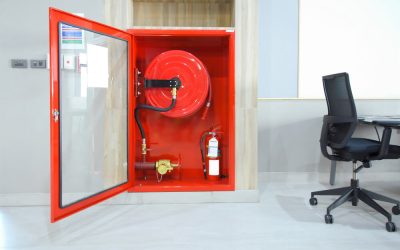How does an expansion vessel work? Hot Water System Management.
An expansion vessel is an essential part of a pressurised hot water system. It looks like a small water tank, which is why it’s also known as an expansion tank. Inside the tank is a rubber diaphragm that separates water from the hot water system from compressed air on the other side.
When you heat water, it expands. In a hot water system where it is essential that the pipes remain full of water at all times, this would cause a problem. With nowhere for the extra volume to expand into, the pressure relief valve would have to open to expel the excess volume in order to protect the system from the resulting high pressure levels.
The expansion vessel is an overflow tank that gives the excess volume of water somewhere safe to go. As the water heats and expands, the additional volume is channelled into the tank, expanding the diaphragm which pushes against the compressed air, allowing space for the water to be safely stored. When the water cools, the compressed air will push against the diaphragm, returning the water into the system and maintaining the pressure at the correct levels. This enables the system to keep running at maximum efficiency.
Without an expansion vessel, your system would be at risk from burst pipes as well as damage to any appliances plumbed into the system, such as dishwashers and washing machines.
Maintenance
The part of the expansion vessel that’s most likely to cause problems is the diaphragm, which is prone to damage from hard water areas. The average lifespan of an expansion vessel is between five and ten years. There are checks you can do to make sure it’s still working, such as tapping on the tank to find out how much water and how much air is in it – the tank should be hollow halfway up. You could also feel the tank to check it’s working properly – it should be warm at the bottom and cool at the top.
Expansion vessels and legionella bacteria
Expansion vessels have been identified as a potential legionella risk by the HSE. This is because of the low water flow and possible stagnation problems, combined with the increased likelihood of rust and sediment, all of which will provide legionella bacteria with a good breeding environment. It is therefore a legal requirement to take action to minimise the risks, a process that begins with a legionella risk assessment.
The placement of your expansion vessel can also help minimise the risk of legionella and other microbial growth. The best position is in a cool area with cold flowing pipes and connected as close to the incoming water supply as possible. It needs to be mounted vertically in order to minimise the risk of debris becoming trapped, and it needs to have an isolation valve and drain valve to aid flushing and sampling which should be undertaken every 6 months in accordance with HSE’s guidelines.
Legionella and Water Hygiene Blog Posts
Office Fire Risk Assessment
As you would expect, keeping your office safe from the risk of fire is a legal requirement under the Regulatory Reform (Fire Safety) Order 2005. If you are the owner or manager of a business, or landlord of an office building, it is your responsibility to ensure your...
Fire Risk Assessment For Flats
Your legal requirements as a landlord include taking precautions to keep your tenants safe, including when it comes to the risk of fire in flats. As part of the fire safety regulations, fire risk assessments for flats is therefore part of your legal obligation to...
Getting A Risk Assessment For Fire in the UK
As an employer, landlord or facilities manager, it is your legal responsibility to keep everyone who uses your premises safe. A fire risk assessment is an important part of this because it identifies what might cause a fire so you can take steps to prevent one, as...







